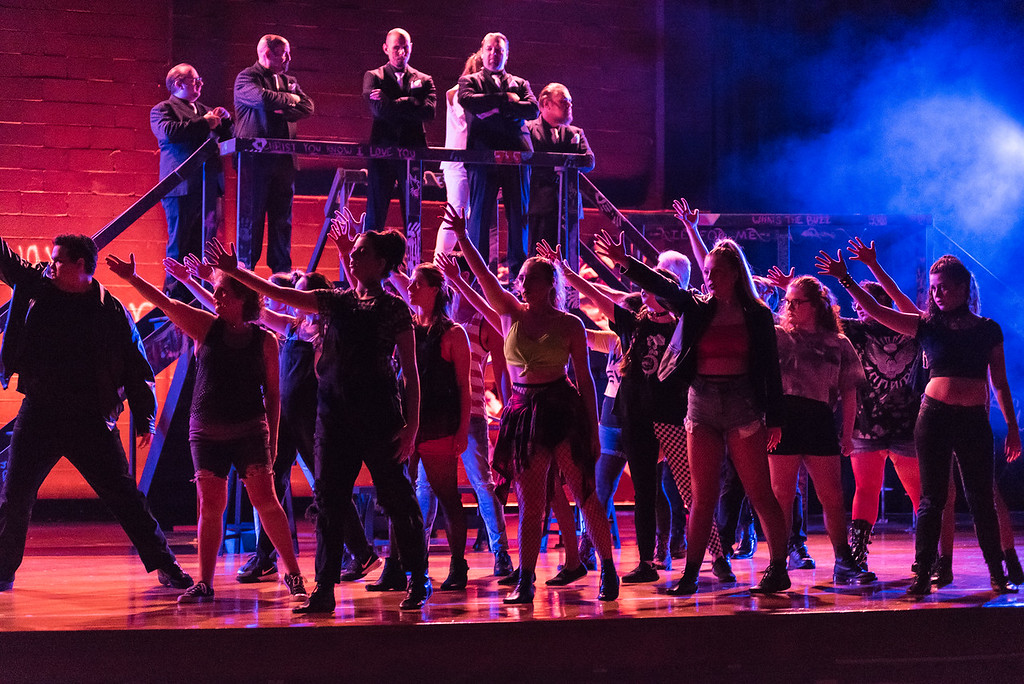Hosanna— Hey-sanna— sanna— sanna— wow! Hey JC, JC— you’re alright by me! And that’s saying something for my second-least favorite Andrew Lloyd Webber musical! Players On Air have outdone themselves with their return to live, in-person theatre this summer. Producing Jesus Christ Superstar (for one weekend/four performances only) with a full company, a fabulous concept, and some brilliant stage talent, really has me singing a different tune when it comes to the Nazarene-Superstar! Directed and Produced by President & Founder of POA, Laura Wonsala, with Musical Direction by Michael Livingston and Choreography by Kristin Rigsby, this iconic rock-musical is finding vibrant life in a new theatre space in Hampstead this summer.
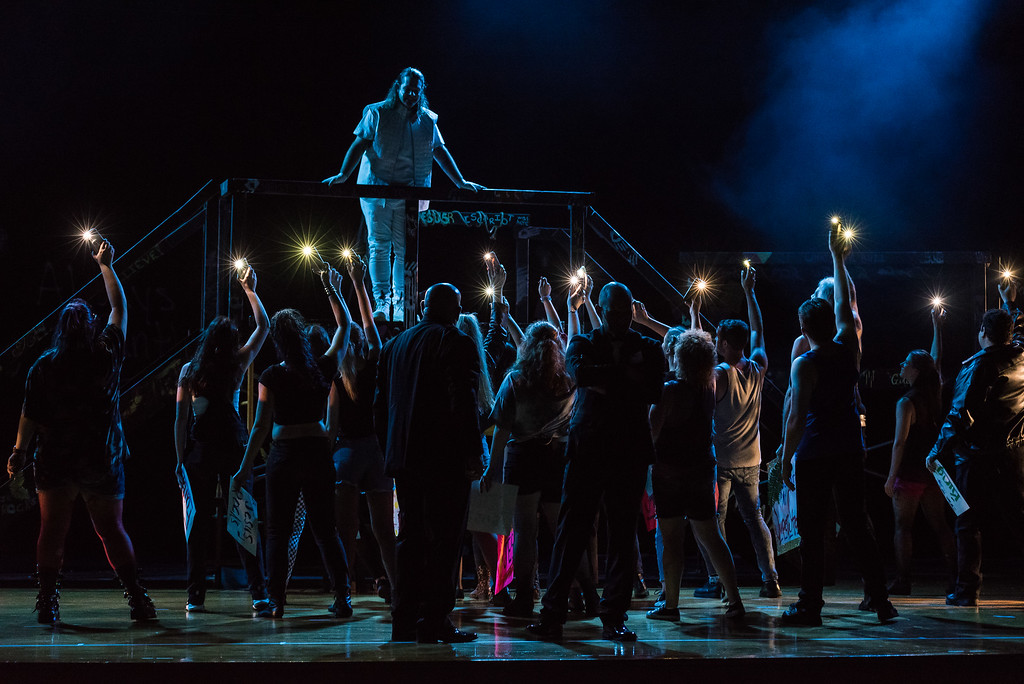
Director Laura Wonsala takes one concept, layers it over Andrew Lloyd Webber’s musical genius, and sticks to it. (Honestly there are places where I believe the concept could have stretched even further, but I’d rather a fully committed concept then too many underdeveloped concepts or a half-baked one, which is all too often what you get from both professional, touring, and community theatre productions of this show.) Wonsala has set the show in a non-disclosed underground punk-grunge-pop-rock-ska club scene. The costumes (designed by Alicia Vogt) of the ensemble reflect this well; there’s everything from fishnets and tattered gear to rocker-style t-shirts and punk-goth shimmer boots. (The ‘Justin Bieber’ marshmallow coat seen on Jesus isn’t doing anyone any favors, but I’m sure Justin Bieber thinks he’s a musical Jesus, so it’s not that far of a stretch to see how he ended up in this couture.) The priests don these spectacular pinstripe suits, complete with pointy white pocket squares making them look like the bouncers of the nightclub, transitioning into the mafia that controls the underground. (This could all be the underground music scene of New York City, honestly) Even Pilate gets a high-end tailored suit, making him look like an upper-echelon corporate figure. (And let’s not forget Herod, dressed like PT Barnum for his three-ring circus number “King Herod’s Song.”)
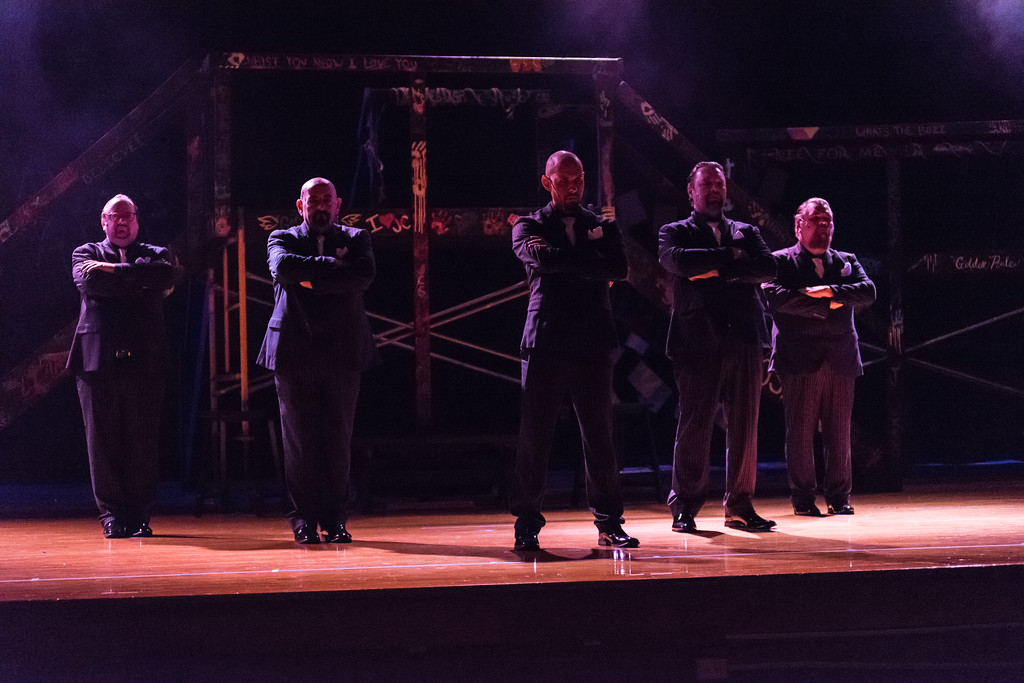
The show’s couture matches the scenic aesthetic, tying Wonsala’s concept together seamlessly. The grungy, graffiti-covered scaffolding, which partially obscures a filthy black back wall covered in crumpled and dated posters for various and sundry. The whole vibe is very ‘underground music’ and it marries well with Webber’s score. Wonsala does an exceptional job of using the space she’s created to get the most out of her cast and the overall performance. During the Temple scenes and other large ensemble numbers, she’s got people filling the stage in a balanced manner, using the scaffolding for their full potential and allowing the spacing of various and sundry activities as well as dance routines to unfold naturally amid the show’s scenic chaos. Lighting Designer Corey Brown augments a great many moments throughout the production, including the very arresting opening reveal of the five priests (The priests— Thaddeus Fillmore, Steve Lebischak, Matthew Reeser, Annas— Tom Rendulic, Caiaphas— Matt Lamb) in their mafiosi-bow with the glow light behind and the subdued lights all around them. Brown’s lighting design is both elemental and atmospheric, giving many numbers that emotional boost to take them to the next level. (There’s even some UV specials and glow-in-the-dark effects featured during “Simon Zealotes” and lots of blood-flash lighting during several different numbers in the second act.)
Choreographer Kristin Rigsby puts a great deal of effort into matching the show’s aesthetic with appropriate dance routines, which showcase five featured dancers (Samantha Azat, Sarah Fronheiser, Tori Rettburg, Dani Rizzo, Claire Ryland.) This quintet of featured dancers perform more complex routines featuring intricate choreography both during “The Temple” and “King Herod’s Song.” Rigsby finds a series of clean and simple moves for the rest of ensemble, who dance frequently with that frenetic chaos of Webber’s score informing their movements. There’s only one point of contention with Rigsby’s work and Wonsala’s vision, and it happens during the “Overture”, which serves as the show’s introduction to the underground dance club vibe. Rigsby has some of the featured dancers performing ballet moves and while they’re pretty they do not juxtapose well with the grunge-rocker underground feel of the show. This aside, her choreography is enjoyable, particularly they hyper-active flashy routine featured during “Superstar.”
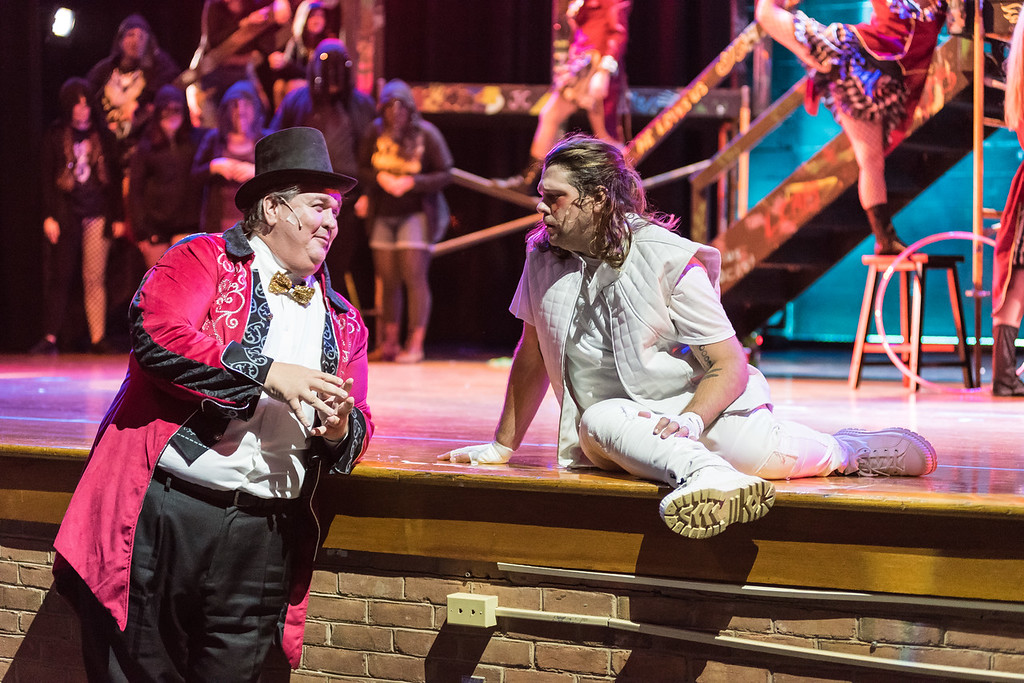
Musical Director Michael Livingston, who doubles up as the great King Herod (in full circus regalia, and although this has nothing to do with the underground rock atmosphere that Wonsala has created, Herod’s song/existence generally has little-to-nothing to do with the show as a whole because Andrew Lloyd Webber is Andrew Lloyd Webber. And Livingston hams it up as a full-blown circus ringleader demanding applause and attention, so it works just fine and the audience enjoys it. It’s also a great chance for him to demonstrate his robust voice, lending an air of affluence and pleasure to “King Herod’s Song.”) As the show’s musical director, Livingston gets a balanced sound out of the ensemble and builds beautiful harmonies, particularly during “Could We Start Again Please”, a duet which features Peter (Roman Mykyta) and Mary (Alyson Kaiser.)
Conceptually the show is impressive. The pacing is spot on, the scenes flow beautifully, the ensemble is loaded with energy, and the overall emotional drive behind the show is both palpable and present. There are some vocal hiccups (as to be expected with almost 18 months of not-performing-live) but the company covers them well. Ultimately the production is strong, gives a lot to take in, features some stellar performances, and is a thoroughly enjoyable rendering of Andrew Lloyd Webber’s work.
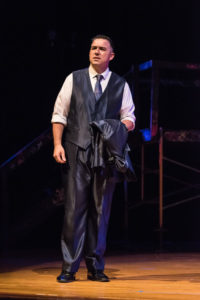
David Kaiser hypnotizes the audience when he first appears as Pilate in the first act during “Pilate’s Dream.” With an unearthly, beautiful voice that just glides through the number, Kaiser is possessed by this mysterious and haunting feeling, which portrays an unexpected and raw humanity in Pilate. Kaiser portrays Pilate as a high-end corporate lawyer type (on his phone and trying to ignore the crowds, brushing them off with a glance or a look later in the production), which is the perfect fit for Wonsala’s vision of the show. That sliver of humanity expressed in “Pilates Dream” is revisited in an ephemeral flash during “Trial By Pilate (39 Lashes)”, when he literally holds Jesus’ life in hands, rushing to catch the fallen superstar after the lashing. Kaiser gives a stellar performance in this often underrated character and really draws the audience in, captivating their attention unequivocally for the few moments he is featured in both of these songs.
As previously mentioned, Mary (Alyson Kaiser) finds delicate and well-blended harmonies with Peter (Roman Mykyta) and also Simon (Tim Price) during “Could We Start Again Please?” Dressed like the grungy-club-working-woman in fishnets, sheer lace, and little else, Kaiser fits the bill for the Mary, who we all know is meant to represent Mary Magdalene. As Mary, she delivers a bright, clear sound both during “Everything’s Alright” and “I Don’t Know How to Love Him”; she serves as the sweetening simple syrup to Jesus’ muddied Nazarene latte.
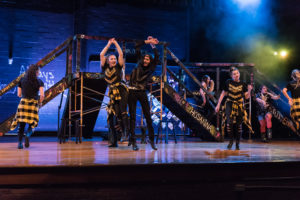
Judas (Ben Azat) and Jesus (Paul Kennedy) are at vocal blows throughout the performance, with Azat having a powerful handle on all of his bombastic emotional expressions. There are times when he can be seen sulking like the petulant, left-behind apostle that he is, moodily glaring at Jesus and company from a shadowy corner of the stage. These little moments give Azat’s Judas great depth. His facial expressions are animated and lively, giving numbers like “Damned For All Time/Blood Money” and “Judas’ Death” that extra push to make them stand out. Both Azat and Kennedy find clever ways to vocally dance around some of the more demanding high-scream-tenor moments that Webber has written into the score. Kennedy in particular has a striking and memorable moment toward the end of “Gethsemane”, which is usually overpowered by voice-destroying screamo-tenor moments. Instead, Kennedy dissolves— physically and vocally— into that maniacal laughter of a trapped animal who has seen there is no way out. This is a sobering moment that really brings the gravity of Jesus’ plight to the forefront of the show. Kennedy and Azat take turns rolling the show’s vocal thunder, whether it’s Kennedy rallying the masses as he blasts into “The Temple” or it’s Azat rallying the audience with his glamourous and glittery show-stopping spectacle number, “Superstar.” The pair work well together on stage and give honesty to their characters respectively.
So what’s the buzz? Tell you what’s happening? Jesus Christ Superstar’s the buzz— that’s what’s happening! And it’s happening for just four shows this weekend in Hampstead (at the old North Carrol High School, now a new performing arts center) courtesy of Players On Air. Don’t wait to get your tickets, it’s a great show.
Running Time: Approximately 2 hours and 10 minutes with one intermission
Jesus Christ Superstar plays through July 25, 2021 with Players On Air in the main auditorium of the new Panthers Athletic Club Performing Arts Center— 1400 Panther Drive in Hampstead, MD. Tickets are available at the door or in advance online.

